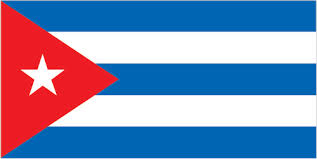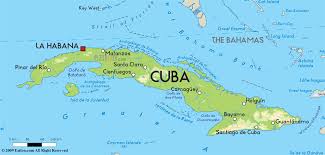Unit 7: Lesson 4
Unit 7: Lesson 4

Overview
Hola!
Como estas?
On this our last Unit Lesson we are going to explore some of the Hispanic speaking culture through one of the 21 Spanish Speaking countries. For this lesson you will need speakers, or headphones.
Let’s begin! Vamos a comenzar!
Cuba, officially the Republic of Cuba, is an island country in the Caribbean. The nation of Cuba comprises the main island of Cuba, the Isla de la Juventud, and several archipelagos. Havana is the capital of Cuba and its largest city.
Located 90 miles off the coast of Key West, Florida, Cuba is the largest Caribbean Island nation. Its neighbors are the Cayman Islands, Jamaica and Haiti. Cuba spans 44,200 miles, making it a bit smaller than the state of Pennsylvania. Its varied geography includes rolling farmland, rugged mountains, urban metropolises, quaint colonial villages and white sand beaches.
Environment
Cuba is the only country in the world that met the World Wildlife Fund criteria for sustainable development in 2006, making it one of the “greenest” nations due to its low environmental impact. There are six UNESCO Biosphere Reserves in Cuba and nine UNESCO World Heritage Sites. Cuba measures 770 miles wide and is the largest Caribbean Island. It has 3,570 miles of coastline and the longest river, the Rio Cauto, is 213 miles long. The nation is also home to the world’s smallest bird, a hummingbird called a Zunzuncito.
Religion
Over half of all Cubans consider themselves Catholic. Santeria also plays a large role in the nation’s self identity. Santeria was brought over to Cuba by Africans and the most common form of Santeria combines Catholicism with Yoruba beliefs. Other religions practiced in Cuba, though minimal, are Protestantism, Judaism, Islam and Jehovah’s Witnesses. There are many beautiful churches and synagogues scattered throughout Havana, but no mosques. Cuba is usually known for its complicated and controversial politics, but this country has plenty of other interesting fun facts that have nothing to do with the Castro family or a tumultuous political past.
History
Cuba's story is one full of perseverance. The island was discovered by Christopher Columbus in 1492 and soon became a territory of Spain. In 1898, the U.S. claimed Cuba during the Spanish American War. However, in 1902, Cuba gained its independence. The Cuban Revolution occurred between 1953 and 1959, which removed Fulgenicio Batista and installed a government run by Fidel Castro, who declared Cuba a socialist state in 1961. Castro remained in power until falling ill in 2008, at which time he relinquished control of Cuba to his brother, Raul Castro.
Details
Capital: Havana
President: Raúl Castro
Continent: North America
Currencies: Cuban peso, Cuban convertible peso
Government: Unitary state, semi presidential system, Socialist state, Republic
Official language: Spanish Language
5 Random Fun Facts About Cuba
- Christmas did not become an official holiday in Cuba until 1997, in preparation for Pope John Paul II’s visit to Cuba in 1998 and to work towards greater religious freedom
- Cuba is often called El Caimán or El Crocodrilo, which is Spanish for Alligator because the aerial view resembles an alligator.
- The prehistoric fish, the Manjuarí, is now only found in Cuba.
- Cuba is the most populated country in all of the Caribbean, with more than 11 million residents.
- Cuba has the highest doctor to patient ratio in the world. There are so many doctors in Cuba, that doctors are often sent abroad to countries with a great need of medical professionals.


